A Stewardship Story: Return to Nature
photo by Orenda Randuch
Resetting Redwoods
Protecting the last remaining redwood forests is crucial. Redwoods support countless species and our communities against the growing threats of fires, floods, and heatwaves. But protecting them is just the first step. Once a redwood forest is protected, it needs to be cared for.
Why does a species that has survived eons need to be cared for by humans? Humans have impacted redwood forests so significantly and quickly–cutting entire landscapes, diverting entire watersheds, and adding new species–that its natural systems need to be reset for a new future. While redwoods can adapt, stewardship can help them recover more quickly. We’re stewarding our forests to be healthier, more resilient, and regain the new old-growth trees that support more plants and animals, store more carbon, clean water, and cool temperatures.
Thanks to you, we steward more than 12,000 acres of protected land that we work to restore to nature for all of us.
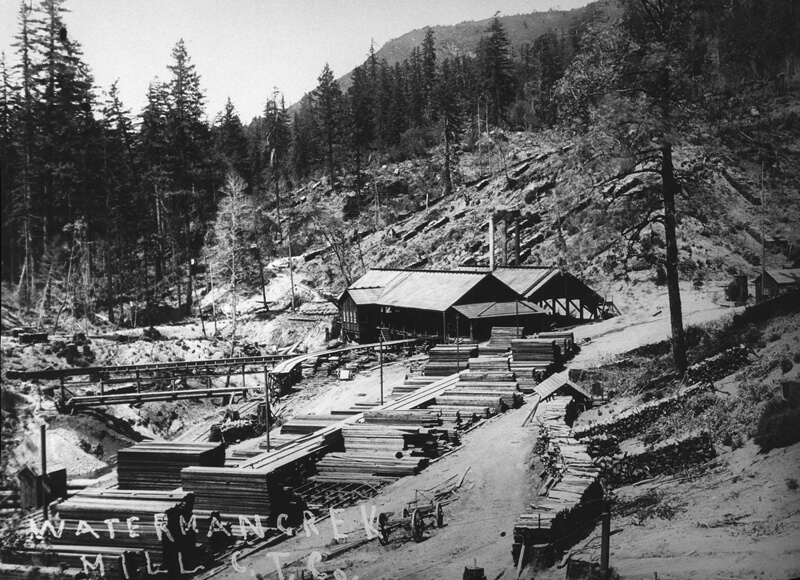
Take a peek behind the trees at how you have helped the redwood forests of the Santa Cruz mountains–some of the most biodiverse and threatened on Earth–return to nature this year.
A Fainter Footprint in the Forest
Last year, you protected more than 50 acres of redwood forest bordering Castle Rock State Park that were zoned for commercial timber harvest. This year, you helped to reduce the human footprint left in this forest. As one of the last inholdings of Castle Rock State Park, Castle Rock Hollow can help realign the Skyline-to-the-Sea Trail and add a camping site to the park. But tucked amongst its groves, were several dilapidated buildings, unsafe for people and wildlife, and silently seeping chemicals and toxins into the soil and water. Thanks to you, these structures and materials were removed this summer, ahead of winter rains and winds that could increase their threat to the forest and all who rely on it.
Watch as photographer Ian Bornarth takes you through Castle Rock Hollow as the structures are removed and the space is returned to the forest.
Removing Roads Less Traveled
While not all of the forests we protect have unsafe buildings and materials on them, nearly all of them have roads. Roads provide necessary access to the forest for stewardship, wildlife monitoring, and for emergency crews like firefighters. But unmaintained roads can add to the erosion of mountainsides fragile after the CZU Fire and the extreme winter storms that followed. With fewer plants to help hold soil in place, dirt roads can wash out, taking away the soil the recovering forest needs, and muddying critical water sources we and wildlife need. With your support, we were able to “rock” crucial access roads—establishing beds of crushed gravel—and decommission unnecessary roads to reduce soil erosion, improve water quality, and give the space back to the forest.
See Orenda Randuch’s photos before and after the removal of a road at the Lompico Headwaters you protected in 2006.
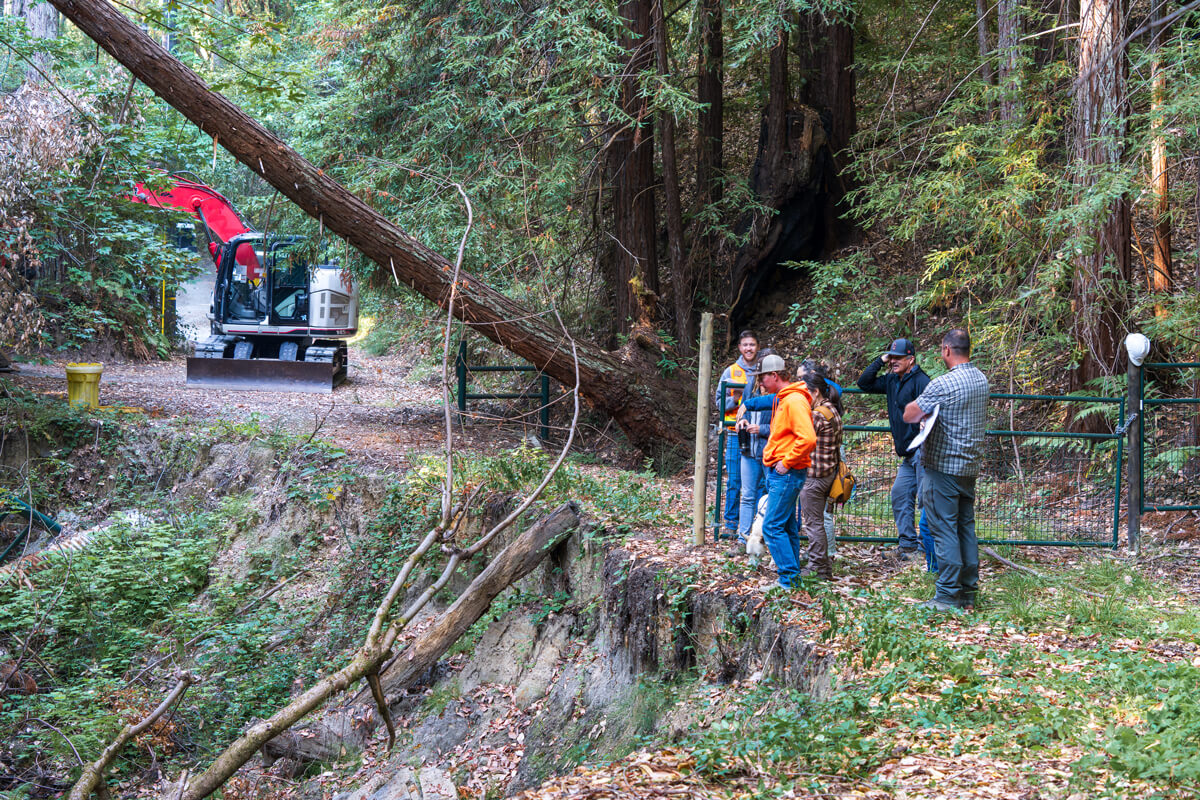
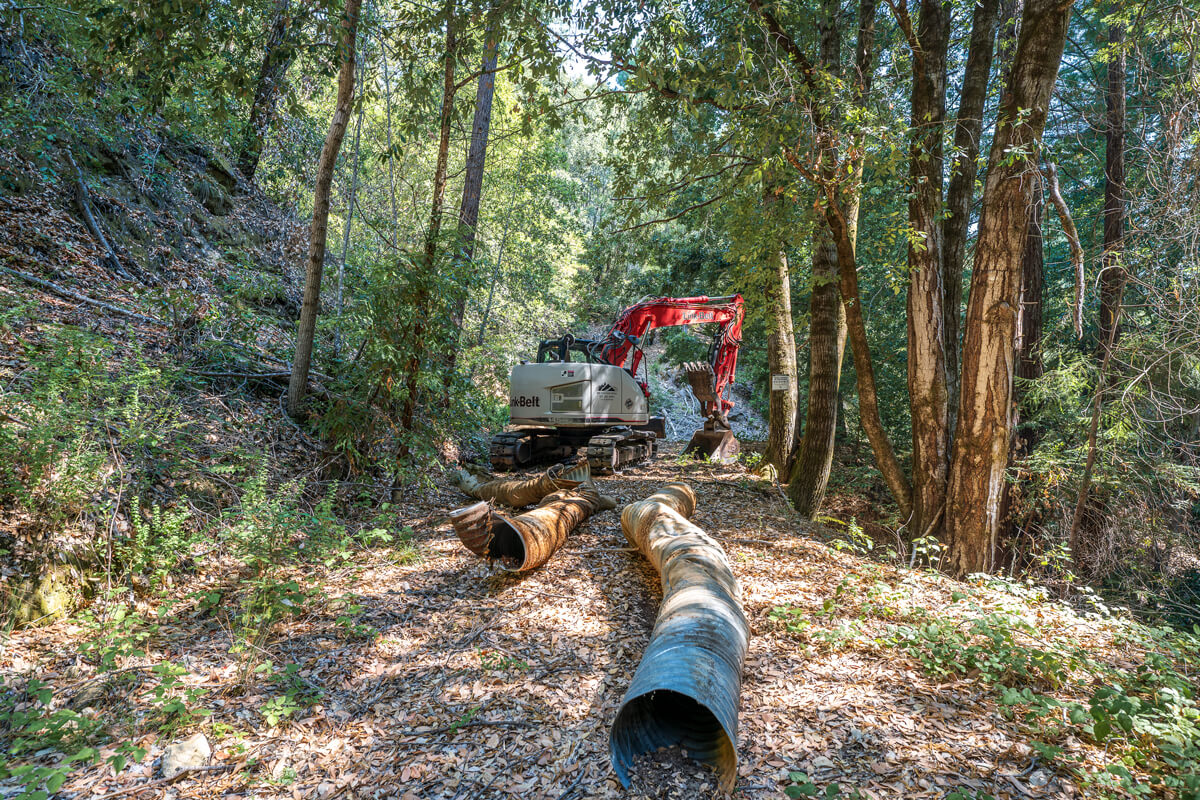
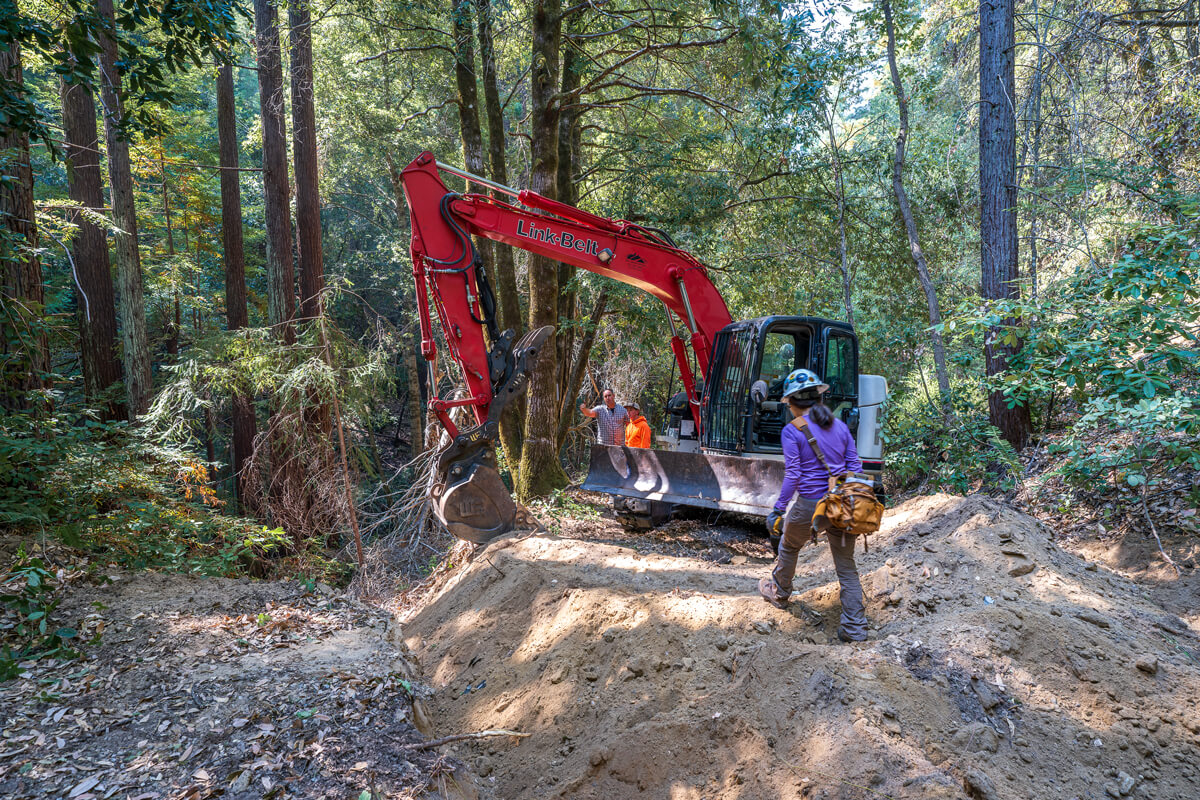
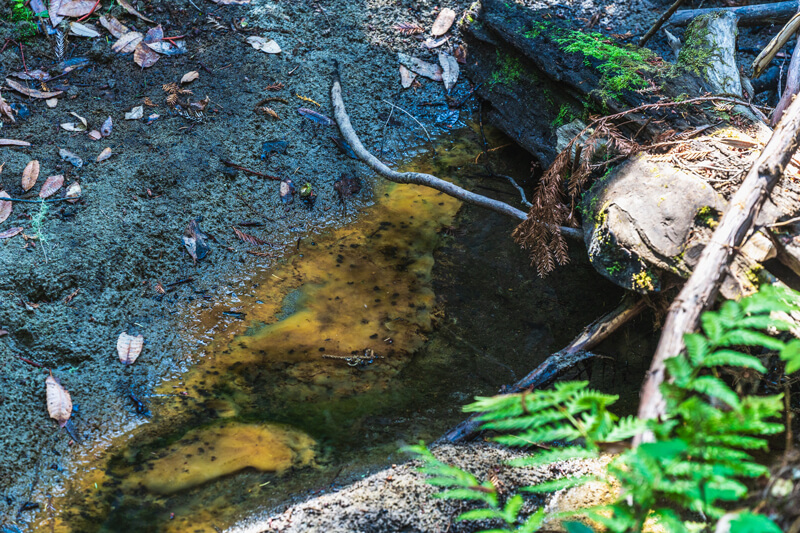
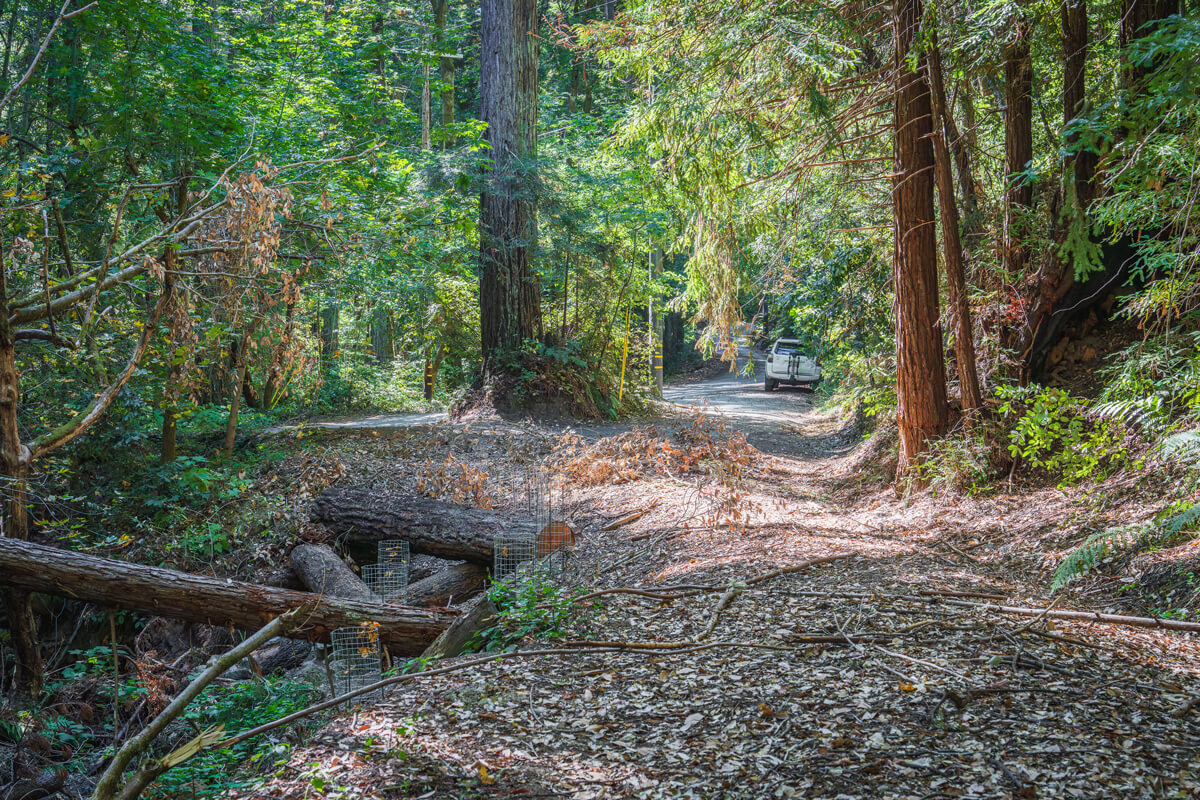
Undamming Water and Wildlife
Unmaintained roads can allow lots of sediment and soil to decrease water quality and critical habitat, but another outdated and unused human structure can make it much worse: dams. A defunct dam on San Vicente Redwoods’ Mill Creek trapped sediment behind it for 100 years—creating poor water quality upstream and poor habitat quality downstream. Endangered coho salmon and threatened steelhead trout return from the sea to the forest to spawn the next generation among the pools created by redwood roots. But the gravel that forms the beds they need for their eggs and to help trap sediment was trapped behind the dam. Thanks to you, the dam was removed in 2021 and we continue to monitor the creek’s recovery, and the return of coho and steelhead to their historic spawning grounds, and the redwood forest through wildlife monitoring and an ongoing environmental DNA sampling project with UCLA and Amah Mutsun Land Trust. In the next season or so, we hope to see the first coho salmon ever documented in Mill Creek when they were fry, return to spawn the next generation after their years at sea.
Watch as our Stewardship Team return fry to the creek after being counted.
Rooting Out Invasive Species
Infrastructure isn’t the only thing humans brought into the redwoods. As people across the country and globe came to the Santa Cruz mountains, plants and creatures came with them. Invasive plants like French, Scotch, and Italian broom took root in places without pests and pathogens equipped to naturally keep them in check. A single plant, such as old man’s beard (Clematis vitalba), can quickly cover ground in the forest and strangle redwood trees. Invasive plants can be a double-edged sword to the heart of the forest as they go up the canopy. Not only can they grow quickly without natural checks—crowding out the native plants the redwood forest and its creatures rely upon—they are also less fire-resilient—making their big growth a big pile of fuel for a wildfire. A seemingly harmless sounding species, periwinkle (Vinca major), is particularly difficult to remove because any root left in the soil will regenerate into new plants. Thanks to you, invasive periwinkle and French broom removal projects began this summer in the redwood forest you protected at Lompico Headwaters so native plants can re-establish themselves on the forest floor. Your support allows us to remove invasive plants, their deep roots and copious seeds, to help reestablish a healthy redwood forest ecosystem across protected lands that is resilient to wildfire and the predicted increasingly extreme weather events and climate changes to come.
See our Stewardship Team's photos before and after work to remove a patch of perwinkle from the forest by hand.
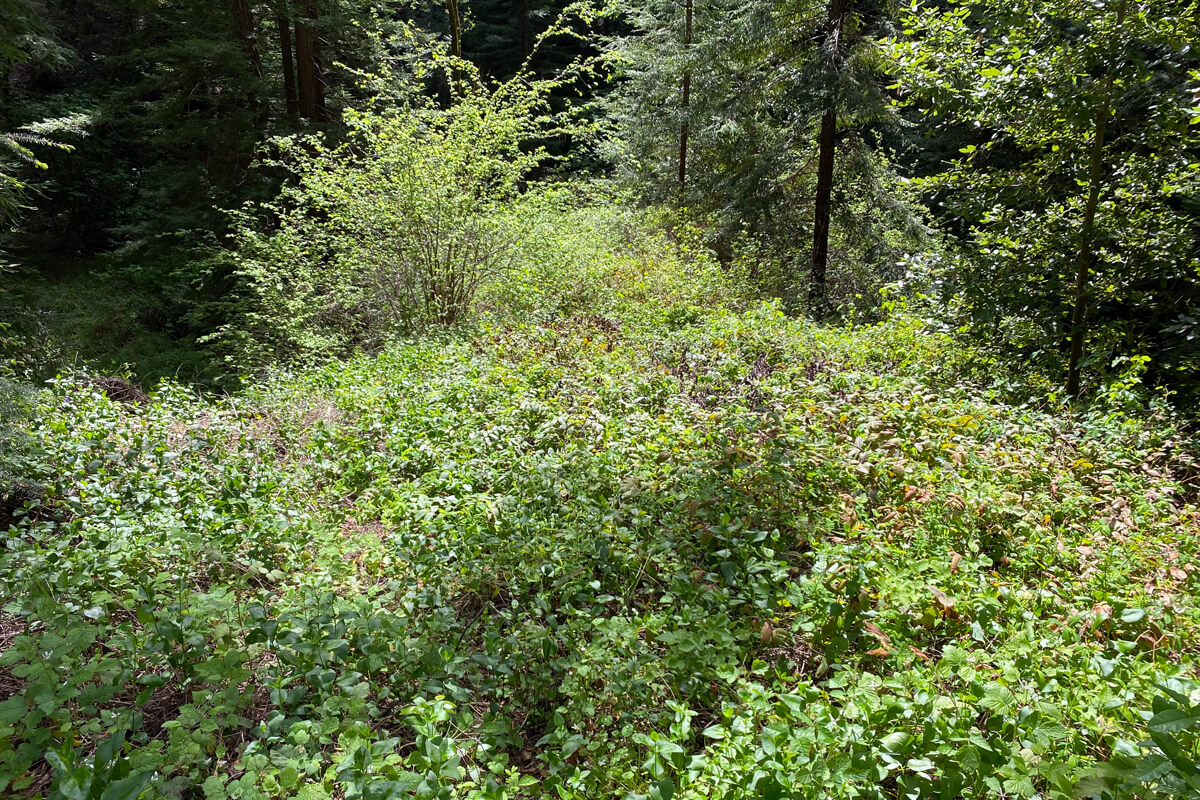
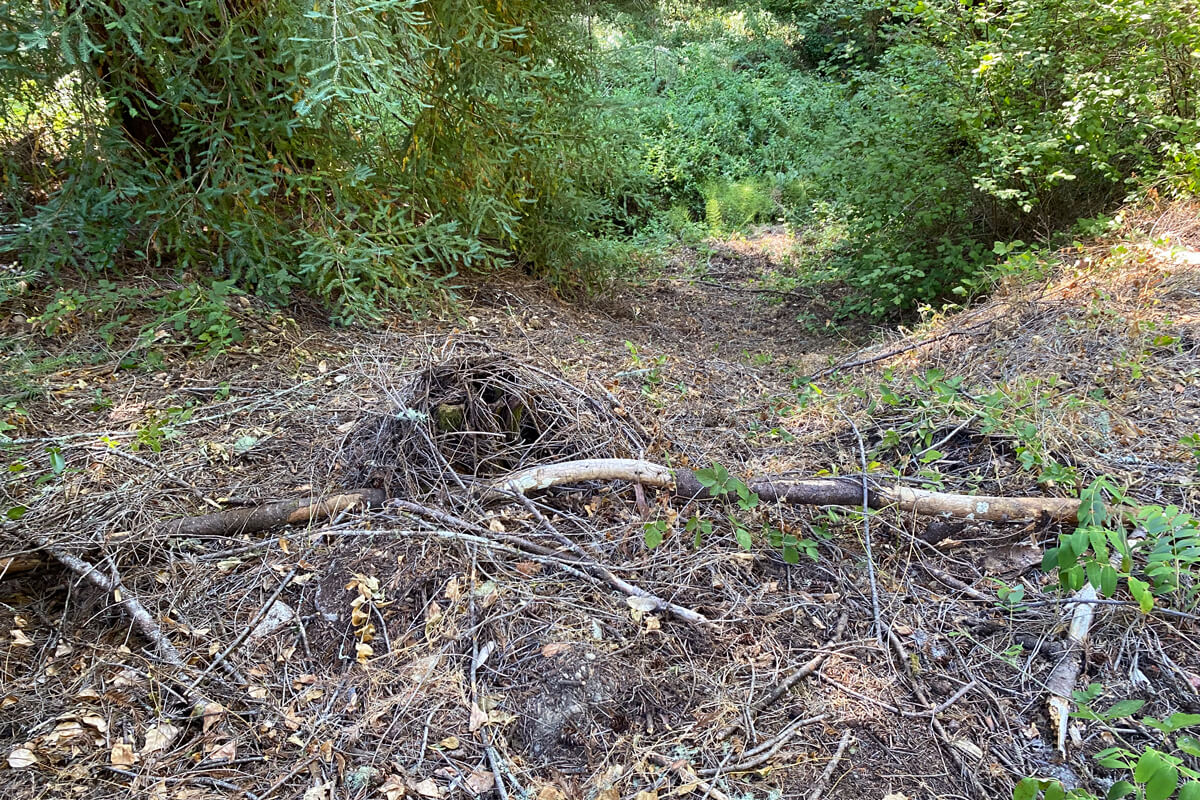
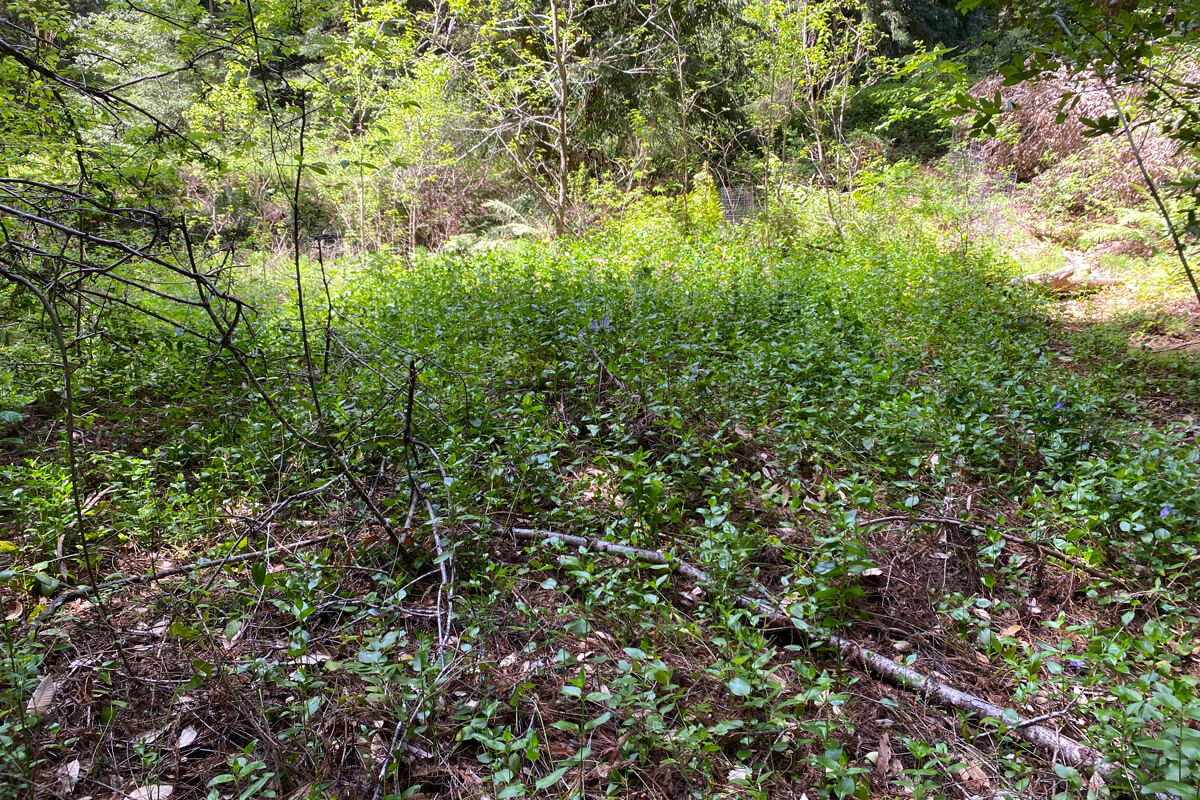
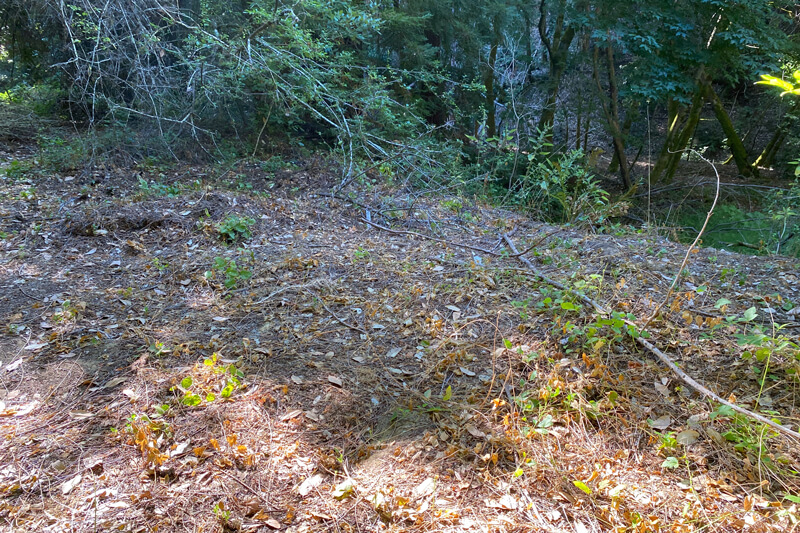
Returning Redwoods to Nature and Resilience
Protecting our last remaining redwood forests from further development is a crucial first step. By reducing human impacts, resetting natural systems, monitoring wildlife, and increasing the forest’s resilience to wildfires and the increasing threats of climate change, you are helping thousands of acres of forest heal. You are returning them to nature.
Together, we will continue to protect and care for redwood forests. With your help, our forests will be resilient and strong, able to support wildlife, clean water, fresh air, cooler temperatures, and healthy communities for generations to come.
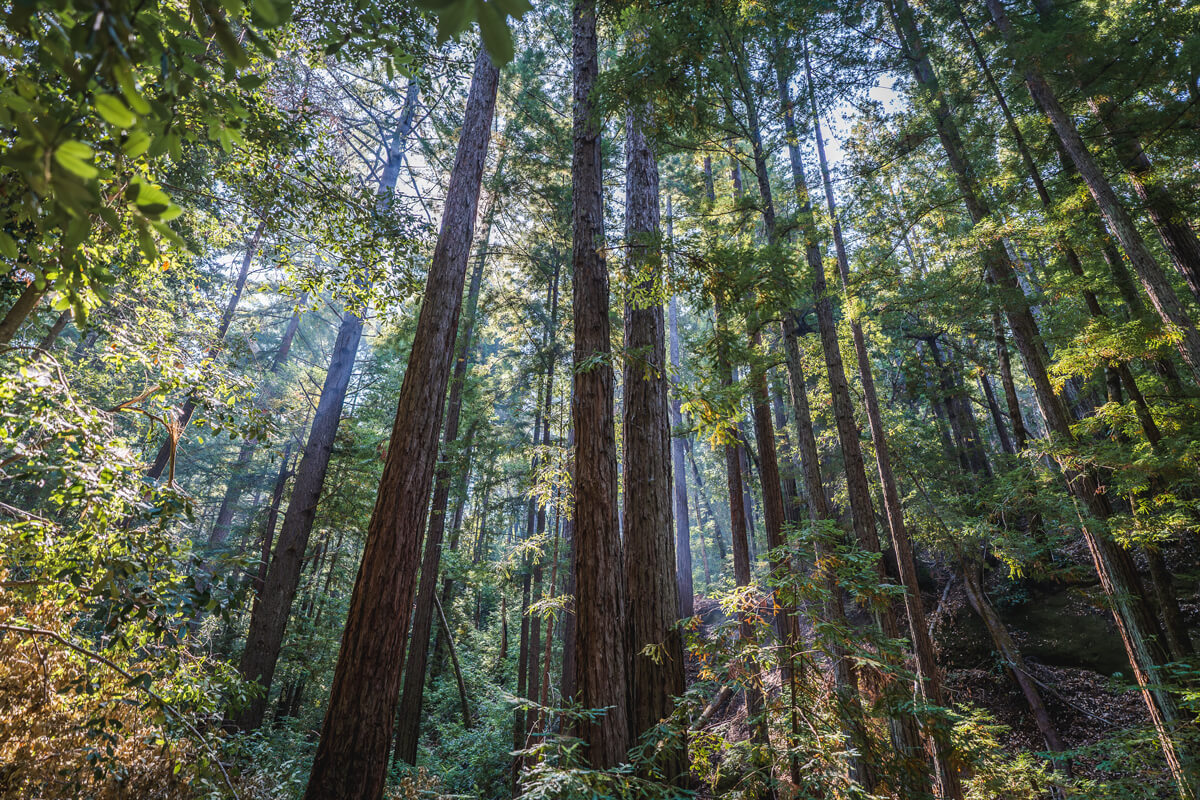
More to Explore
- See San Vicente Redwoods’ fire recovery and resilience in the photo essay Fuel for Fire
- Read more about Monitoring Wildlife
- Learn more about Caring for Our Lands